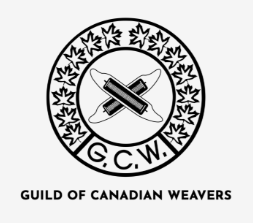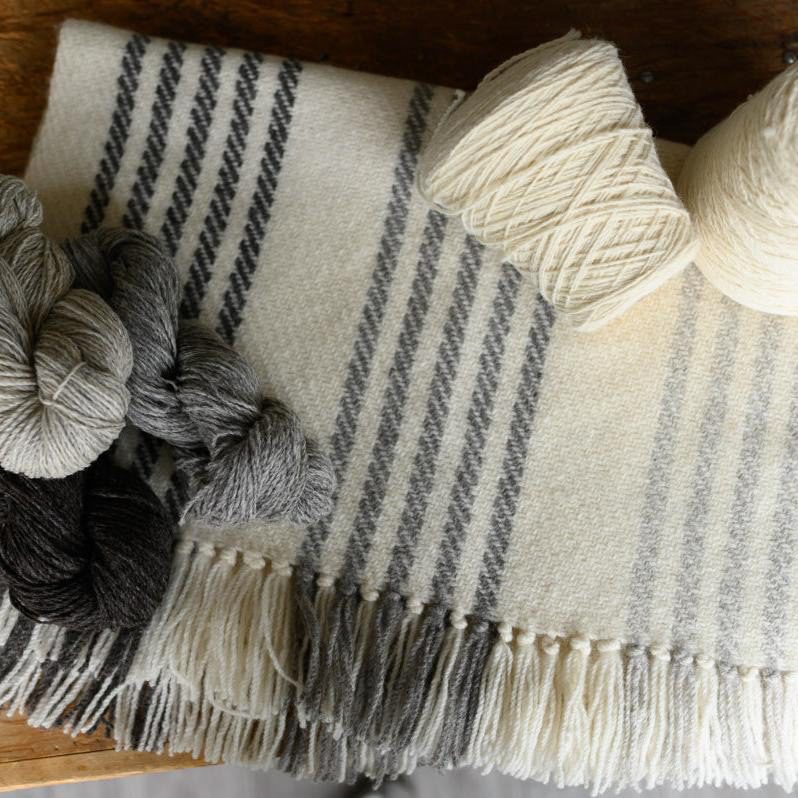Learning this gifting strategy felt like unlocking a superpower. The concept is simple: think of an activity the recipient loves and either (A) upgrade a tool they use or (B) treat them to a related “splurge” they would not typically buy for themselves. It need not be extravagant or expensive—though it can be! Think copper measuring cups for a baker, or a hori hori garden knife for your favourite green thumb.
Inspired by Stacey Taylor of The Crooked Hem, I have compiled a holiday gift guide for the weaver in your life.
This is not the first gift guide for weavers; I drew inspiration from other lists (The Woolery, Christabel Balfour, Kelly Casanova, Reddit, and others).
I have provided links, but encourage you to visit your local yarn shop. Brick-and-mortar stores are invaluable to the fibre community. They are gathering places for sharing knowledge, accessing tools, and finding inspiration—and they are steadily closing down or moving online. Our patronage is the best way to keep the doors open.
Thanks for reading! If you like it so far, please consider subscribing.
Stocking Stuffers
First, let’s start with a few smaller items. From everyday staples to beautiful handmade tools, the suggestions in this section are perfect for stocking stuffers.
Bobbins and spools are like the bobby pins of the weaving world—you always need more. A word of warning: Check what kind of shuttles the recipient uses, because not all brands are compatible with each other.
Quilting T-pins can be used to fix broken warp threads or keep track of progress while weaving. As with bobbins, you can never have enough!
Wonder clips are gentle on fabric and the best way to secure the hem of a dishtowel while sewing.
My Mom recently shared this handmade steel tapestry needle set with me, and we have both been coveting it since! They are beautiful and well-made. #BIFL. They also reminded me of the hand-carved tools sold by Maiwa, such as their tapestry weaving and darning needles.
Thread weights are the kind of thing that would much improve my weaving experience, yet I cannot bring myself to buy them. Instead, I haphazardly hang washers or coin-filled film canisters off the back of my loom. (So, yes, get them the thread weights!)
Woven tags are the perfect finishing touch for a project, and they look oh so polished! You can get standard designs or place a custom order with a label shop in your area.
The Weaver's Bench Kit by Gather is ideal for the new weaver. It contains all the little things you need while at the loom, neatly stored in a zippered pouch.
Tools
Next, let’s explore some tools to expand or upgrade your favourite weaver’s kit.
Heddle hooks are used to pass yarn through the harnesses on a loom. Though this can be done by hand, some yarns are easier to manage with a hook. Similarly, the threads need to be drawn through the reed with a reed hook, which is thin and flat to pass between the metal slats. Or, you get both together!
Shuttles are used to hold the yarn that is being passed from left to right, and back again. Want to “splurge”? An end delivery shuttle is a real treat! These are pricier due to their built-in tensioning device, which makes it easier to get smooth selvedges. Top tip: Don’t forget to get the matching pirns!
Temples help maintain the width of a weaving project, preventing broken threads. Each temple can only be used for a specific range of widths. For example, I could use three of Leclerc’s temples on my 27” floor loom: 11”-16”, 16”-22”, or 23”-38”. Which I chose would depend on the width of my project.
Thread snips are an essential tool every weaver wold use and appreciate daily. I wear mine around my neck to keep them close at hand. Similarly, investing in quality fabric shears is a luxurious and practical gift.
The McMoran Yarn Balance must be magical. Place a length of yarn on one end and cut away small pieces until the arm is perfectly level, and voilà—you have calculated the yarn’s weight (yards per pound). Combined with a kitchen scale, this tells you exactly how much yarn you have left, avoiding the stress of “yarn chicken.”
Fringe twisters take (some) of the tedium out of twisting the fringe of a scarf or blanket.
Palette Scout helps you explore new colour palettes, but the PDF Matching Guides are what caught my eye. The “Complete Bundle” includes HEX codes for Aurifil Thread, Kona Cotton, DMC Floss, and Gist Yarn!
This project planning journal, designed by weavers for weavers, helps keep track of weaving drafts and includes space to attach yarn and samples. While a notebook and pen could do the job, this dedicated tool ensures all your weaving details stay organized in one place. It prompts you to record essential information—like yarn type, sett, EPI, PPI, and more.
Big Ticket Items
Wanting to really spoil a weaver? Here is how to do it.
A bobbin winder is essential to speed up the process of loading bobbins. If the recipient already has a bobbin winder, you could upgrade them to an electric winder, or a double-ended winder that can accommodate cones, pirns, and bobbins.
Another essential item is the metal reed in the beater bar. Reeds evenly space the warp yarns and press the weft into place. The number of metal slats per inch is called "dents per inch,'“ and a range of options is necessary for different projects. Since reeds are highly specific and not inexpensive, I recommend asking the recipient for some key details: (1) what DPI they want, (2) what type of loom they have, and (3) what length reed they require.
It is essential to store reeds properly, or they can warp, making them unusable. A reed/raddle stand keeps these tools organized and protected when not in use.
Cone holders are used when measuring a warp or winding bobbins. They keep yarn cones from tipping over and prevent the fibres from tangling. While a new or novice weaver might hesitate to justify this purchase, cone holders can significantly improve the weaving experience, making the process less frustrating.
Before weaving can begin, the warp (vertical threads) must be measured and organised. This can be done on a warping board or mill. Warping boards are more portable and take up less space. Warping mills tend to be less physically demanding, and their price point reflects this, making them an excellent “upgrade” opportunity!
I purchased my loom secondhand and it did not come with a weaving bench. Hello, sticker shock! Unlike regular chairs, weaving benches are built to allow proper posture, with adjustable heights and tilting seats. Many feature a footrest to help maintain a relaxed position during long hours at the loom. Some also include storage areas for the tools you need to keep within reach at the loom.
Reading Material and Eye Candy
Since deleting Instagram from my phone, I have been turning to weaving and fibre-related publications for inspiration. There are an endless number of beautiful and educational weaving resources. I have included some classic reference books and a small selection of specialized editions focused on specific skills. A synopsis of each is available at the included links.
Magazines
FOLKLIFE Magazine
HÅNDVÆRK Bookazine
FIBRE Magazine
Laine Magazine
Shetland Wool Adventures Journal
Books
Weaving: Contemporary Makers on the Loom by Katie Treggiden
A Handweaver's Pattern Book by Marguerite Porter Davison
The Handweaver’s Pattern Directory by Anne Dixon
The Key to Weaving: A Textbook of Hand Weaving for the Beginning Weaver by Mary E. Black
Plain Weave: 60 Patterns for Mastering the Basic Technique by Tina Ignell
Doubleweave by Jennifer Moore
Weaving: Structure and Substance by Ann Richards
Passementerie: Handcrafting contemporary Trimmings, Fringes, Tassels and More by Elizabeth Ashdown
Weaving with Wire by Christine K. Miller
Courses, Gift Cards, Etc.
Finally, for the weaver who has it all, why not get them something experiential, or an annual membership?


Much of weaving is spent planning the next project. Weaving kits do this legwork for you. When picking a kit, check what kind of loom you need and the skill level required. Here are some recommendations for a beginner (rigid heddle), novice (4-shaft), and advanced (8-shaft) weaver.
Fiberworks is a computer software used to design weaving patterns. The Bronze version supports up to 12 shafts. This is more than enough for most weavers. However, for (much!) more advanced weavers, the Silver/Silver Plus versions support up to 64 shafts on compu-dobby and computer-assisted looms.
How about membership in a local or national guild? I joined the Guild of Canadian Weavers earlier this year, and eagerly await their quarterly bulletins. If you are in the US, the Handweavers Guild of America offers similar benefits, including educational materials and in-person events.
Online weaving schools offer self-paced and high-quality weaving instruction. I subscribe to the Jane Stafford School of Weaving and have read rave reviews of the School of Sweet Georgia. The former teaches handloom weaving techniques, whereas the latter is multicraftual, including instruction on knitting, crocheting, spinning, weaving, dyeing, and more!
In-person workshops offer a hands-on learning experience, immersed in the craft with other weavers. These are places to gain new skills, refine techniques, and receive personalized guidance from experienced instructors. Search “weaving workshop + [YOUR CITY]” for local workshops.
Lastly, a gift card to a local yarn shop or weaving supply store is a flexible and thoughtful gift. Many of the companies I have linked above offer gift cards, and while I tend to skew Canadian, some US-based stores are included. A quick Google search can also help you find local shops that cater to fibre artists.
Is there anything that you would add?
You can expect one more newsletter from me in 2024, where I will step into the world of colour inspiration.
Until next time,